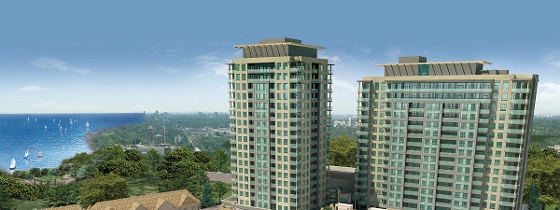Condominium Sales Jump in 2016 - Fourth Quarter
Statistics for the fourth quarter of 2016 show that condo sales in the GTA and Durham Region continue to show strength amidst fear of oversupply that simply has not materialized.
The Toronto Real Estate Board has released stats for Q4 of 2016, and the numbers tell a compelling story.
In the GTA, there were 6,831 MLS sales of condo apartments, versus 5,587 in 2015 - that's an increase of 22.3%.
Combine that with a 13.4% drop in new listings over the same period and a drop in active listings of a massive 56.8% and you see a drop in supply that helps to explain the ongoing rise in prices.
In the GTA, the average price was $437,281 - an increase of 14.5% over 2015, when the average was $381,981.
In Durham Region, the average price rose even more - 16.9% to $324,295 - over 2015's value of $277,343.
But why, you ask, did prices rise more in Durham Region over the rest of the GTA?
The supply situation here is even tighter. If you look at the average days on market, the picture becomes clearer. In the GTA, the average condo apartment took 23 days to sell in Q4 2016. That's pretty fast when compared to historical averages and other major markets.
In Durham Region, the average days on market figure was only 15 days!
Also, the sales price to list price ratio was also higher. In the GTA, the average condo apartment sold for 100% of list. In Durham, it was 101% - up to 104% in Whitby.
The Rental Picture
The number of condominium apartments being rented varies greatly across GTA areas. In Toronto, 34.7% of units were being rented in Q4. In Durham, it was only 17.2%. That's great news for prospective condo buyers, as the ratio of owner-occupied units is more than double here than in Toronto. Owners tend to care for their condos much better than tenants, so you can expect units for sale to be in better overall condition in Durham Region.
The vacancy rate in Durham was the lowest in the GTA for condo apartments - by far. That is great news for investors. The rate here was just 0.4%, versus 1.0% in Toronto, 1.1% in York and 1.3% in Peel. With a lower vacancy rate, investors have very low risk of having a unit stay vacant.
Looking Forward
The view ahead remains strong for condo apartments in Durham Region.
First, supply remains very low compared to demand and looks to remain that way for the near future. New builds of condo apartments are relatively sparse compared to other regions, which will contribute to constraining available inventory.
Next, prices are substantially lower here compared to Toronto and York regions - the two major markets closest to us. The ripple effect of pricing continues to drive people entering the market east as long as this pricing pattern continues.
Third, Toronto has a separate municipal Land Transfer Tax. This alone is a major factor contributing to higher closing costs in Toronto and makes Durham a more attractive location for those with tight budgets. A proposal to increase the amount of Toronto's LTT makes this factor even stronger.
Finally, improved transit options for commuting from Durham are making the distance more palatable for buyers. The expansion of highways 407 and 412, combined with increased GO train service are helping to lessen the strain on highway 401, which makes our market more attractive, especially in Oshawa and Clarington.
If you are interested in exploring the local market, please contact me. I would be pleased to help you!




Comments:
Post Your Comment: